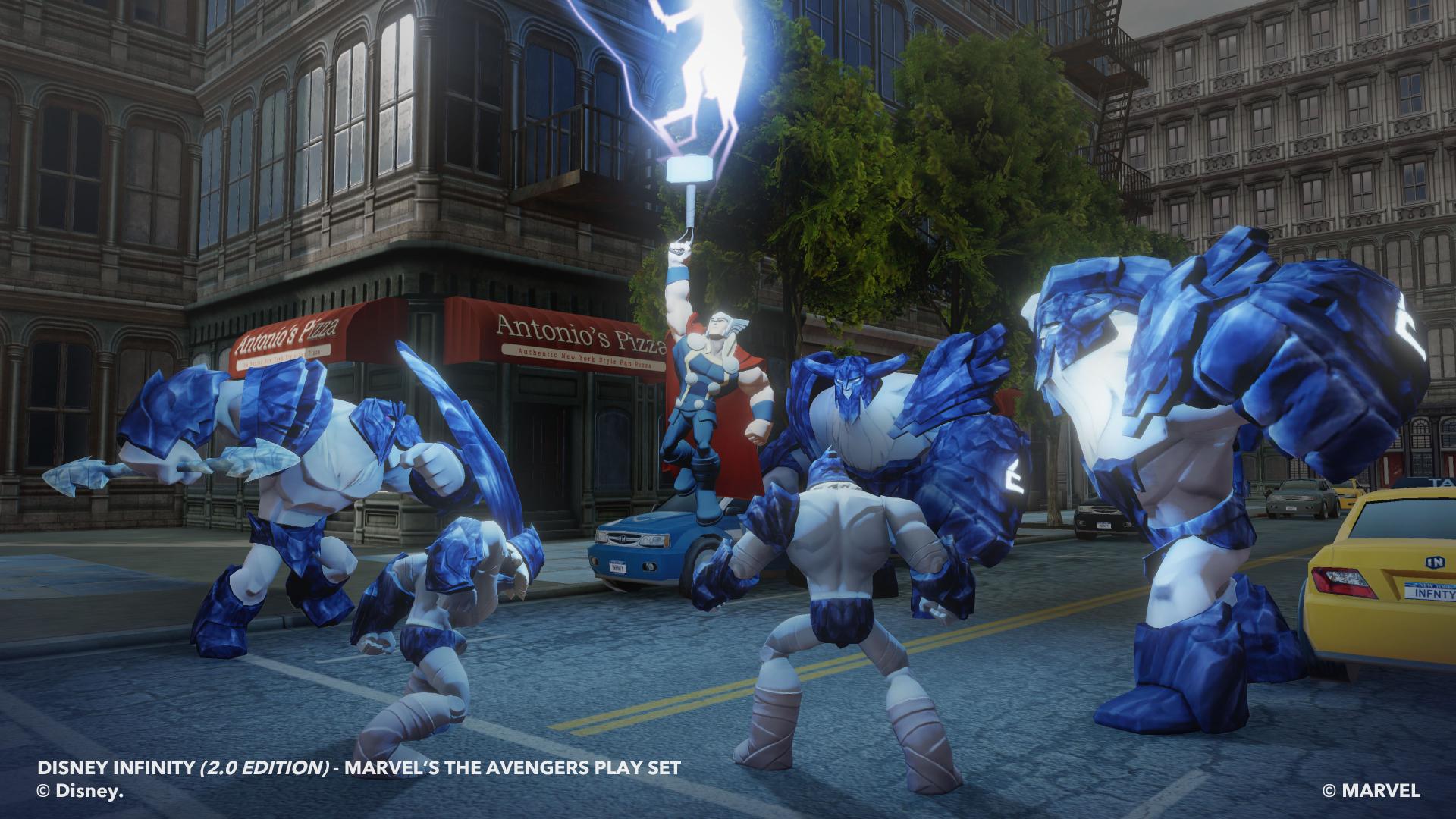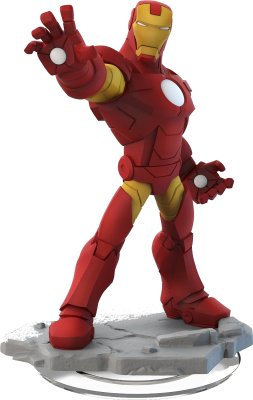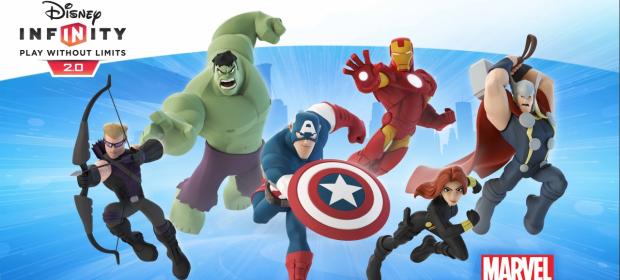If you were to give out awards for putting your best foot forward, Disney Infinity 2.0 wouldn’t be anywhere near even qualifying. A horribly long load time into the Marvel Super Heroes play set (included with the starter pack), and clunky, heavy-to-control characters dominate the opening mission which introduces us to Disney Infinity again.
The general idea is that our heroes have just unfrozen themselves and need to save Avenger/Stark Tower before it’s overrun by Loki’s Frost Giant minions. The combat begins and it’s pure button mashing repetition; everything is linear and you just go from corridor to corridor before ending the level, and choosing whether to continue the Marvel story, or be introduced to the Toy Box mode.
Thank God, then, that immediately after the dreary opening mission, the larger, more open area of the city is yours to play in. Suddenly you’re allowed to take to the skies as Iron Man or Thor and can explore the world with freedom, gathering all manner of collectibles, some of which add to the Toy Box mode, while others just unlock concept art. Interestingly, among the multitude of collectibles, there are crossover tokens, which, once ten are collected, allow characters to appear in each other’s playset.

Immediately, Infinity 2.0 feels a better game. Initial fears subside, and you start to enjoy the mechanics far more. Button-mashing combos are still prevalent, but as you progress through the skill trees and level up your individual heroes (the cap is twenty for all heroes, including ones from the previous game), more options become available. Super moves and changes to standard combos change things up, and you can improve core skills as well. One problem that rears its head early on is that the environments seem tailored towards characters who can fly. You can climb via jump pads and lifts, but overall, you’ll initially play more as Thor and Iron Man, just because they are more fun to navigate the world with – you’ll end up playing Black Widow mainly when you transition to the indoor missions, then later when you unlock a certain vehicle that lets everyone take to the skies. It’s an interesting way to add movement speed to the non-flying characters, because the motorbike you unlock first handles very heavily, and is best avoided.
 There’s not a huge amount of variety to missions, either. There’s certainly an attempt to change things up, adding things like motorbike races or horde-style combat challenges – but they’re not enjoyable enough to make you want to come back and improve your time, let alone try and top the leaderboards. Indeed, most missions will involve going from place to place, beating up on some guys, then doing it all again in the next mission. The enemies do get progressively harder, but the techniques to beat them don’t really change.
There’s not a huge amount of variety to missions, either. There’s certainly an attempt to change things up, adding things like motorbike races or horde-style combat challenges – but they’re not enjoyable enough to make you want to come back and improve your time, let alone try and top the leaderboards. Indeed, most missions will involve going from place to place, beating up on some guys, then doing it all again in the next mission. The enemies do get progressively harder, but the techniques to beat them don’t really change.
Things are improved when playing with a friend (or one of your children), as you can both explore the world at your leisure, before joining up for a story mission. If you find it too easy, simply adjust the difficulty. There are also numerous mission nodes around the playsets that allow you to play competitively, and these are a surprising amount of fun. As Iron Man, facing off against your son as Thor is silly, especially when you both take to the skies in your enclosed battle arena, seeing who will blink and go to ground first, which is where the combat is really intended to be.
Thankfully, the technical issues that plagued the previous game appear to have been ironed out. The open-world sandbox area of the Marvel play set is hitch-free, and the frame rate is mostly solid, but prone to major drops in missions that take place inside. It’s not the most visually taxing game for the hardware, but it looks pretty when cutscenes play, and though the city itself is a little on the bland side, the colour comes from the characters. There are elements of humour, and occasionally the gags work really well, but there’s no mistaking this is a game aimed at children. That said, the voice acting is fun, and Samuel L. Jackson as Nick Fury is a lovely bonus. Generally speaking, the atmosphere and character is there for all to see on screen.
Interestingly, both of my children jumped immediately into the Toy Box mode. This is a clean slate where you can add environments of your choosing, as well as characters, enemies and, well, basically everything that’s in the game. While the truly creative will go for the absolutely empty sandbox, you can choose from numerous presets to get you started. This time around, you can save and share your boxes with other people, and if you don’t feel like spending hours making missions and worlds for others, you can just download community created content. Some are better than others, and the devs have created a few to give everyone ideas. One platforming based level I tried was okay, but the controls aren’t precise enough to really make overly taxing jumping much fun.
Without question, the Toy Box is where Infinity still shines. A sandbox that truly lets your imagination run wild, only now you can share or download creations via the internet. But the play sets are a vast improvement over the first game and a lot of fun in their own right, while the technical performance is far better, too. Being able to bring your existing Infinity toys into 2.0 is a nice touch, but something you’d expect.
It’s going to cost you a fortune, though, because once you start to enjoy dashing through the air as Iron Man, you’ll want more of those pricey heroes to throw into your game, because they’re wonderful little toys that look and feel good. On that note, this seems an ideal time to remind you that we don’t accept any responsibility for any overdraft charges you may incur after playing Disney Infinity 2.0.

GOOD. A game that scores 7/10 is worthy of note, but unworthy of fanfare. It does many things well, but only a few of them incredibly well and, despite a handful of good qualities, fresh ideas and solid mechanics, it fails to overwhelm.
Review code provided by publisher.





